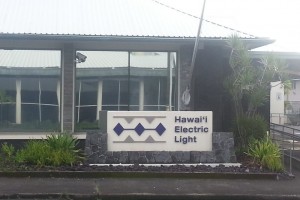Hawai’i Electric Light: Generation Margins Improve
After lacking in power generation last week, Hawai’i Electric Light says its generation margins have improved.
The utility company’s Hill 6 steam plant has returned to working order after undergoing its annual overhaul. A company spokesperson says the return increases the units online and improves reserve margins.
“We do expect to have sufficient generation for tonight’s evening peak energy use period,” said Rhea Lee-Moku, Hawai‘i Electric Light spokesperson.
On Thursday, the Hāmākua Energy Partners plant remained out of service, according to Hawai’i Electric. One of the plant’s combustion turbine units is anticipated to return on Friday. The second unit is anticipated to return early next week.
The Hāmākua Energy Partners plant is usually the second largest generating facility on the island, behind Hawai’i Electric Light’s Keahole Power Plant. The Hamakua plant is 60 megawatts, while the Keahole plant provides 79.8 megawatts of electricity.
Earlier this week, Hawai‘i Electric Light returned its Puna steam unit to active use. The system is generally on standby.
Hawai‘i Electric Light’s normal contingency plans allow for meeting customer needs even if the largest generating unit on the system goes out of service unexpectedly, the electric company said in a release Thursday. The company has a “diverse portfolio of firm and variable (as-available) generation that includes about 208 megawatts provided by independent power producers and other customer-sited generation.”
“As an island utility, we must be self-reliant since there is no inter-connection to neighboring utilities such as on the mainland U.S. This means having enough generators on our island to produce power during peak times when customers use the most electricity,” said Lee-Moku. “It also means we need more reserve generation to cover units that are out of service for regular maintenance and to cover a potential unplanned loss of our largest generating unit.”














